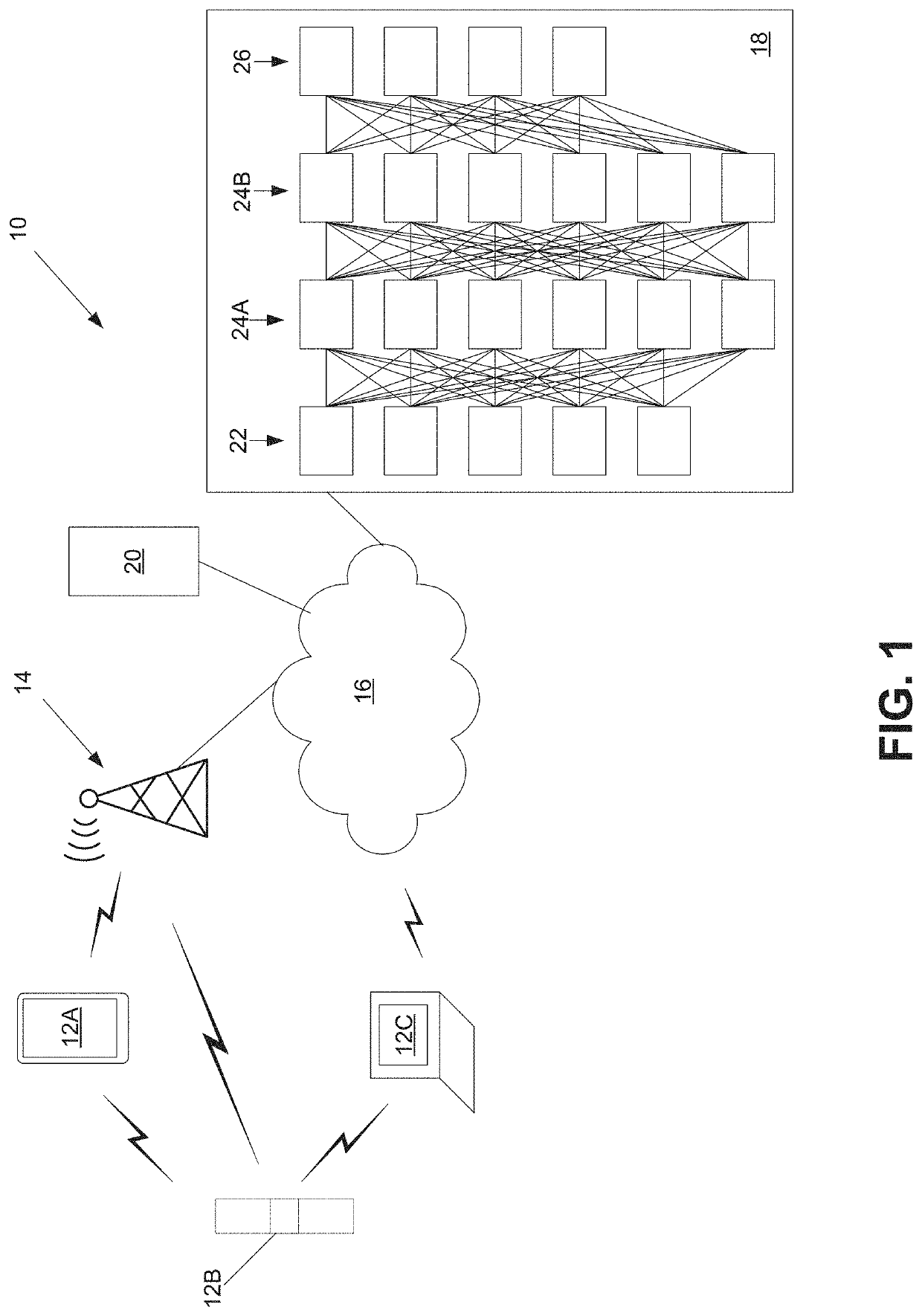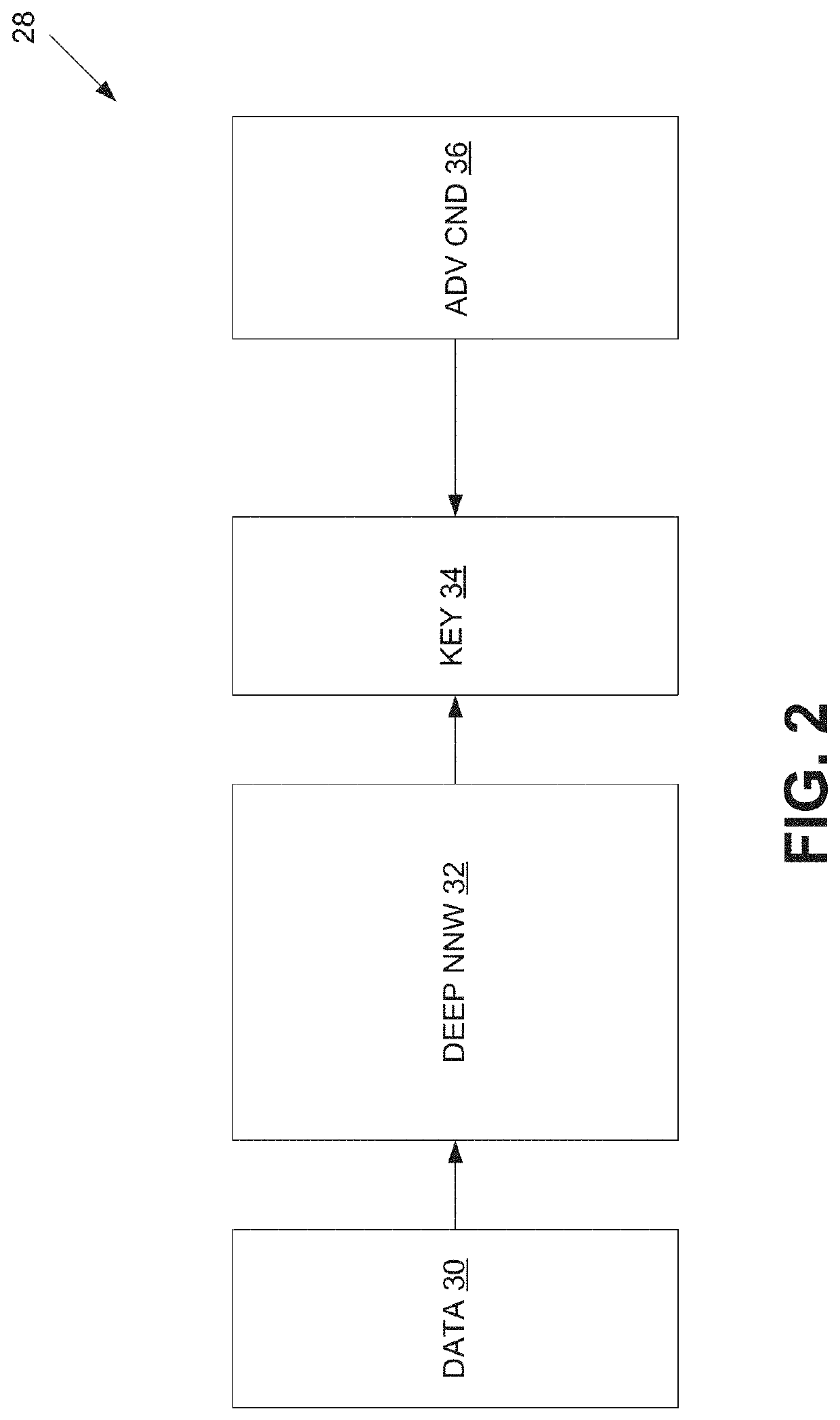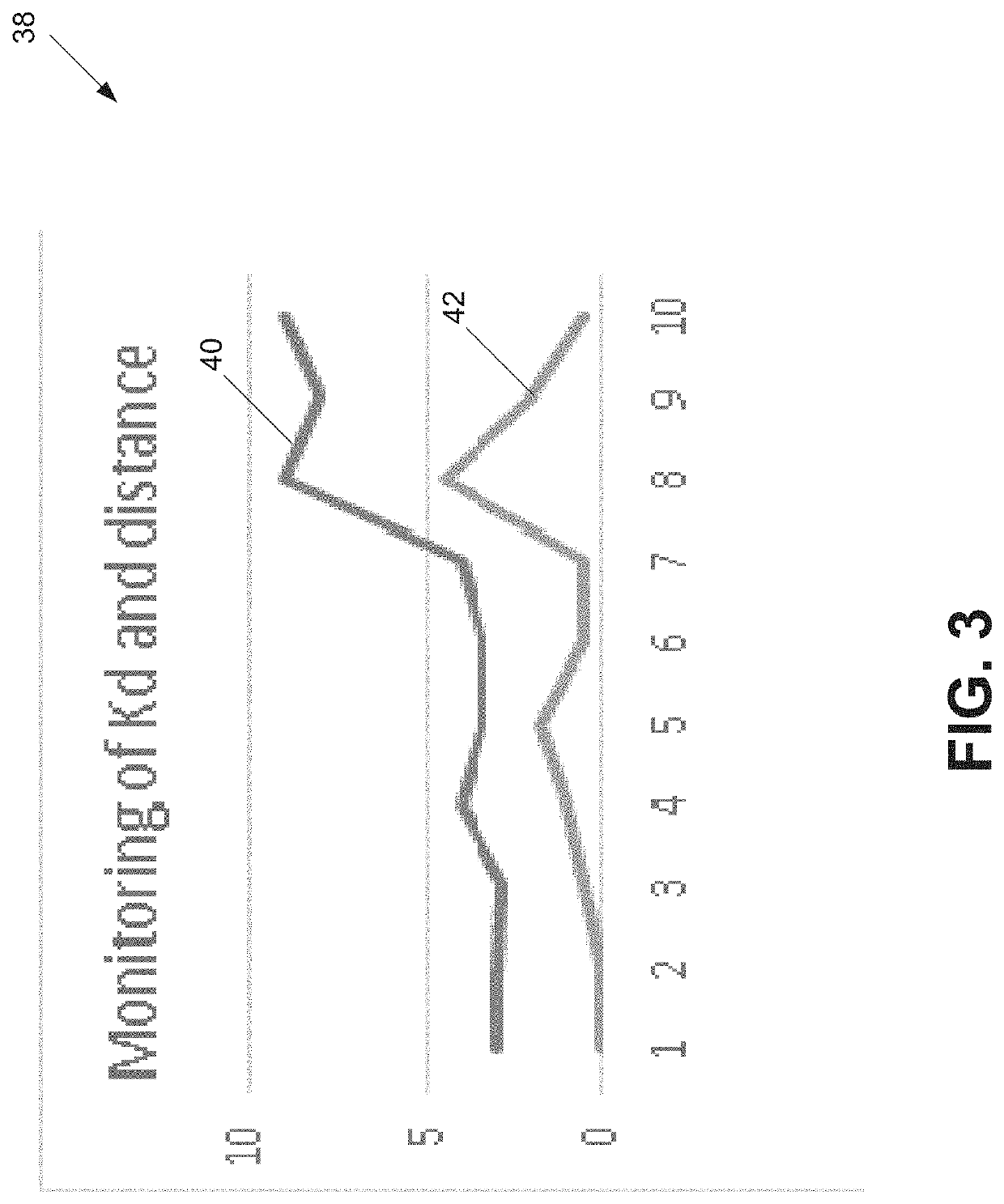Self-learning verification method for data authenticity
a verification method and data technology, applied in the field of data privacy and authenticity, can solve the problem of no general-purpose way of determining how, and achieve the effect of better authenticity verification
- Summary
- Abstract
- Description
- Claims
- Application Information
AI Technical Summary
Benefits of technology
Problems solved by technology
Method used
Image
Examples
Embodiment Construction
[0019]Disclosed herein are certain embodiments of a data authentication system and associated methods that learns to extract from any physiological signal a highly subject-specific feature set. In one embodiment, a neural network is trained in an unsupervised fashion to find an identification string by training the algorithm to encode information from the signal into the string that varies as little as possible within-person, but concurrently varies as much as possible across persons. In some embodiments, the data authentication system also performs a privacy preserving function. In one embodiment, the model may be trained multiple times for different types or combinations of physiological signals (e.g., heart rate, respiration, gait, etc.). The obtained loss of the model may be used as a metric of how much the specific sensor type identifies a person, which in turn (the metric) may be used when sharing data with parties that are only allowed to have de-identified data (e.g., for pr...
PUM
 Login to View More
Login to View More Abstract
Description
Claims
Application Information
 Login to View More
Login to View More - R&D
- Intellectual Property
- Life Sciences
- Materials
- Tech Scout
- Unparalleled Data Quality
- Higher Quality Content
- 60% Fewer Hallucinations
Browse by: Latest US Patents, China's latest patents, Technical Efficacy Thesaurus, Application Domain, Technology Topic, Popular Technical Reports.
© 2025 PatSnap. All rights reserved.Legal|Privacy policy|Modern Slavery Act Transparency Statement|Sitemap|About US| Contact US: help@patsnap.com



